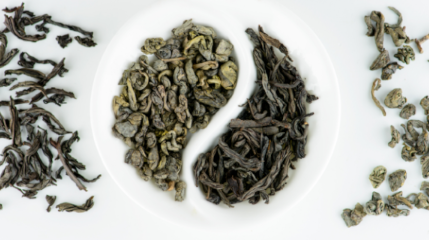So much goes into the study of each sensory organ and how that sense interacts with the rest of the body, our emotions, and our consciousness. It’s amazing to learn about how interconnected the body is; how every part of the body (down to the tiniest thing) impacts, relates to, and is impacted by, the rest of the body and all of nature. It starts to put things into perspective, and promotes feelings of utter awe and gratitude. These articles can only share little bits and pieces of what Ayurvedic scientists, doctors and teachers have uncovered about the body over thousands of years—they barely scratch the surface, but I hope you end up catching a glimpse of the magnitude, brilliance, and awe of the human body as you read them, too.
We’ve been exploring taste for the last two weeks, and have discussed Sweet and Sour so far; today, we’re going to look at Pungent.
All in all, there are Six Tastes, according to Ayurveda, and each taste has a different impact on the body. The way we taste something depends on the constitution of our saliva, other fluids the body, and status of our sinuses. Foods taste different depending on what’s going on inside of us, and we don’t all experience each taste in the same way. Some of us love certain foods; some of us can’t stand them. Pungent foods are usually one way or another for the most part for most people. That’s because they’re often really hot, bold, and sometimes quite intense.
What characterizes a pungent food? Well, sometimes, physically, our eyes can start to water after eating something pungent, or we’ll experience a burning sensation on the tongue, or heat in the mouth or whole body and even the sweats. Pungent foods are stimulating, penetrating, and invigorating.
Some examples of pungent foods are: chilies, black pepper—actually, all peppers, wormwood, ginger, clove, mustard seed, mustard greens, kohlrabi, leeks, spelt, buckwheat, raw spinach, turnips, paprika, black and green tea.
The pungent taste can aggravate Pitta and Vata doshas, and balance Kapha, meaning it can cause irritation, agitation, hot-headedness, stubbornness, literal physical heat in the body, anger, frustration, anxiety, nervousness, restlessness, and competitiveness. It can, on the other end of the spectrum, bring us energy and enthusiasm when we’re feeling low or lethargic or depressed. Pungent can literally act as the “fire under our feet” to start a creative project, make a life change, get out of bed when we don’t feel like it, or start to exercise more regularly. It’s comprised of the elements Air and Fire and so it gives us specific qualities related to those elements like: movement, heat, changeability, mobility, and feeling/being stoked.
Pungent foods primarily affect the Lungs, Large Intestines, Stomach and Heart, and they also support (or weaken if eaten in excess) the blood (rakta) and reproductive tissues (shukra—male, arthava—female). Too much pungency can lead to complications in the mouth, digestive tract, heart, circulation, and lungs. It can lead to ulcers, tremors, inflammation, hiccoughs, and even infertility for both men and women in extreme cases.
Eaten appropriately, or with the proper dosage, pungency has the capacity to support circulation, reduce cholesterol, reduce sweating, clear stagnation and congestion, alleviate bloating and flatulence, thin the blood, cleanse the blood, relieve muscle pain, and treat parasite infections. So when we eat this taste in a balanced way and to the appropriate degree for our own constitution, it has a really important, healing, invigorating effect on our system.
To learn more about your own needs, schedule a consultation with us here: https://santacruzayurveda.com/appointments/
Sources
“Ayurvedic Tongue Diagnosis,” by Walter Shantree Kacera, 2006.
